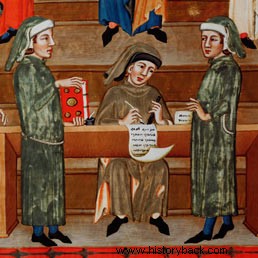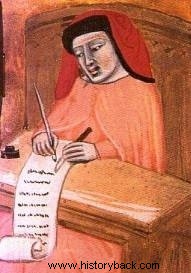
A deed from the notary in the Middle Ages
The following article was written by Mariangela Lavecchia , Doctor of Law already author, always for Pills of History, of this article https://www.pilloledistoria.it/8674/storia-antica/dal-baratto-alla-compravendita.

Medieval notary
The Law 89/1913, commonly known as “ notarial law ", Governs the organization of notaries and notarial archives, defining in article 1 the role of the notary.
He is a public official set up with the task of receiving the documents between living and of last will , give them public faith, keep their deposit, release them copies, certificates and extracts.
The figure of the notary finds its origin in Italy.
The evidence of a first notarial activity from which it is possible to derive the institute of modern notaries dates back to the Middle Ages and are more connected to the city of Bologna.
The ratio of this connection is certainly to be sought in the same way as the development of two other institutes in the same period: municipality and university, with which the notaries had to deal, influencing each other positively.
In this regard, there is the ancient Notary Building which indicates the headquarters of the powerful society of notaries, located in the heart of the city, where the notarial documents drawn up by the local notaries were kept.
Despite the important role currently held, the notary was born with very different tasks from the current ones.
During the Roman Republic the notarius he was the secretary of the emperor and the governors of the provinces with the task of writing the notes under dictation and taking notes on the occasion of public speeches or court proceedings.
Only in the late empire did the figure of the tabellio, appear which is closest to today's figure, having the function of drawing up private deeds even if he did not hold a public function.
